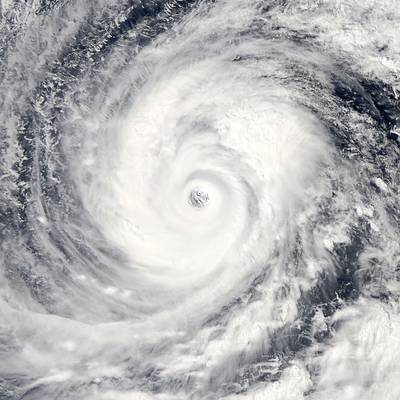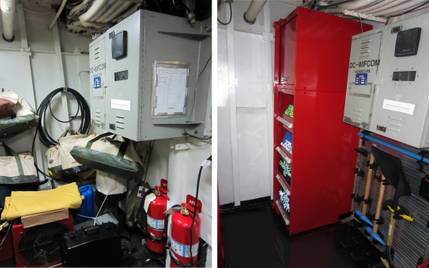Coast Guard sets Port Condition X-RAY Ahead of Tropical Storm Dorian
The Coast Guard Captain of the Port San Juan set Port Condition X-RAY at 2 a.m. Monday for Puerto Rico and the U.S. Virgins Islands due to the possibility of sustained gale force winds greater than 39 mph from Tropical Storm Dorian that may arrive to the area within 48 hours.
The Coast Guard strongly cautions the maritime community to remain vigilant and take the necessary precautions as Tropical Storm Dorian makes way into Eastern Caribbean waters.
During Port Condition X-RAY port facilities are currently open to all commercial traffic and all cargo transfer operations at Coast Guard regulated facilities may continue while X-RAY remains in effect.
Mariners are reminded there are no safe havens in these facilities, and ports are safest when the inventory of vessels is at a minimum. All ocean-going commercial vessels greater than 500 gross tons should make plans for departing the port no later than the setting of Port Condition YANKEE.
Vessels desiring to remain in port must immediately contact the COTP to receive permission and are required to submit a safe mooring plan in writing. Vessels bound for the U.S. Virgin Islands or Puerto Rico unable to depart 24 hours prior to threatening winds making landfall are advised to seek an alternate destination.
Recreational boaters are advised to seek safe harbor. Maritime and port facilities are reminded to review and update their heavy weather response plans and make any additional preparations needed to adequately prepare in case of a potential impact to the area. Mariners can view the latest port updates on the Coast Guard’s Homeport site.
At this time, Coast Guard Captain of the Port San Juan anticipates setting Port Condition YANKEE at 8 a.m. Tuesday for the U.S. Virgin Islands and Puerto Rico. These dates and times are subject to change based on future forecast.
The Coast Guard advises public and recreational boaters of safety messages:
- Secure belongings: Owners of large boats are urged to move their vessels to inland marinas where they will be less vulnerable to breaking free of their moorings or to sustaining damage. Trailer-able boats should be taken out of the water and stored in a place not prone to flooding. Those who are leaving their boats in the water are reminded to remove EPIRBs and to secure life rings, lifejackets and small boats. These items, if not properly secured, can break free and require valuable search and rescue resources be diverted to ensure people are not in distress.
- Stay clear of beaches: Wave heights and currents typically increase before a storm makes landfall. Even the best swimmers can fall victim to the strong waves and rip currents caused by hurricanes. Swimmers should stay clear of beaches until local lifeguards and law enforcement officials say the water is safe.
- Be prepared: Area residents should be prepared by developing a family plan, creating a disaster supply kit, having a place to go, securing their home and having a plan for pets. Information can be found at the National Hurricane Center’s website.
- Stay informed: The public should monitor the progress and strength of the storm through local television, radio and Internet. Boaters can monitor its progress on VHF radio channel 16. Information can also be obtained on small craft advisories and warnings on VHF radio channel 16.












